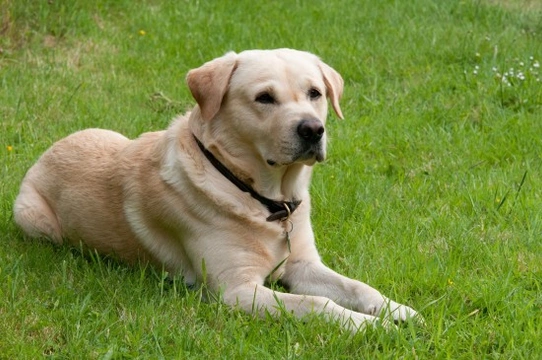
The extremely personable Goldador dog
If you are on the search for one of the friendliest, most personable dogs available, you should certainly add the Goldador to your list of potential candidates! The Goldador is a cross breed or hybrid dog that was developed from two of the most friendly dog breeds out there; the incredibly kind natured Golden Retriever and the cheerful and enthusiastic Labrador Retriever.
Both the Golden Retriever and the Labrador, and subsequently the Goldador too have bright and sunny dispositions, kind temperaments and lots of patience, making them a good choice of dog for many people, from the canine novice or first time owner, to families with children. If you are wondering what the Goldador has to offer and if they might be a good choice of companion dog for you, read on to learn more!
The history of the Goldador
The Goldador was first deliberately bred in earnest around 10-15 years ago, and so is a relatively new hybrid dog type within the UK. The purpose of breeding the Goldador was (and still is in many cases) to produce an intelligent, eminently trainable dog that would cope equally well with the rigours of life as a working dog and also as a family pet. Goldadors are sometimes bred or selected for training as assistance dogs for people with special needs such as hearing or sight impairments, as both of the Goldador’s parent breeds have proven their suitability and willingness to take on this important task over the course of many decades.
While the Goldador has a lot to recommend it as a family pet and will no doubt continue to rise in popularity over the coming decades, at time of writing there is no formal Goldador breeding registry or organisation, or specific club devoted to promoting this hybrid breed.
What does the Goldador look like?
The Goldador is a medium sized dog, falling into the size and build range of that of the purebred Labrador or Golden Retriever. They weigh on average between 60 and 80lb, and stand up to two feet tall at the shoulder. They are relatively long legged dogs, but have a proportionate build that indicates their Golden Retriever and Labrador parentage.
The Goldador is most commonly found with a yellow or Golden Coat, as of course all Golden Retrievers are golden coloured, and yellow is a popular Labrador colour as well. As Labradors also come in black and chocolate colour varieties, Goldadors may also appear in either of these colours too. The Goldador coat may be long-ish and silky like that of the Golden Retriever, or may be shorter in the style of the Labrador. While the Goldador coat is not hugely high maintenance to take care of, it will still require brushing or grooming at least once a week.
The Goldador personality and needs
The Goldador is an active, alert and intelligent dog that likes to keep busy! They love spending time outside and need to be offered plenty of opportunity for walks, exercise and free play. They are keen to please and very trainable, and require clear, unambiguous training commands and a confident trainer. The Goldador is at home either on land or in the water, and many of them are keen swimmers.
Goldadors enjoy spending lots of time with people, and need to receive a significant amount of mental stimulation. The Goldador left alone for long periods of time will soon become bored and unhappy. Goldadors love children of all ages, and are very tolerant and good-natured with kids and nervous people.
Finally, both the Golden Retriever and the Labrador love their food, and the Goldador is no exception! Begging, scavenging and picking up food (or what they perceive to be food) when out walking is a common Goldador trait if they are not firmly trained away from doing this, so the Goldador owner must be aware of this and keep an eye on what they eat, and their weight and activity levels.
Goldador health
The Goldador is over all a very healthy dog, with an average lifespan of 11-14 years. Like both of the component parent breeds, the Goldador has some elevated risk factors for a range of hereditary and inheritable conditions, including hip dysplasia, elbow dysplasia, and progressive retinal atrophy.
It is possible to health test and certificate the parent dogs for many problems and conditions before breeding, with a range of exams such as DNA tests, hip scores and eye examinations. With breeds or types of dogs that are particularly prone to hereditary conditions, breeders will often undertake these tests on their own dogs before making the decision to breed, and will make the test results available to potential purchasers of the subsequent puppies.
Goldador breed status and quality
The Goldador is not considered to be a pedigree dog breed in its own right, meaning that is it not recognised by The Kennel Club or any other breed registries. This means that the quality and health of the Goldador is not regulated, and no records are kept about any health trends or recurrent issues that arise within the breed.
However, the quality and health of the parent dogs themselves will go a long way towards dictating the health of the eventual puppies, and pedigree Golden Retrievers and Labradors will have pedigree papers and a searchable breed line history that the potential puppy buyer can investigate.
The quality of registered pedigree dogs can be very variable, which in turn is reflected in their resultant offspring. Checking out the quality and standard of the parent line of your Goldador will go some way towards indicating if any particular problems with health or conformation may become evident within your own Goldador dog.



